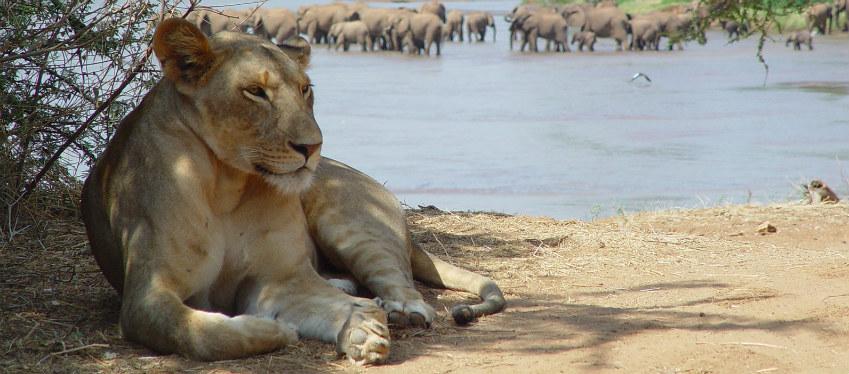National Geographic Celebrates World Lion Day with Spotlight on Leading Big Cats Researchers

21st Century Fox Social Impact
National Geographic joined with the rest of the global community in commemorating World Lion Day on August 10, taking the opportunity to highlight some of its many efforts to protect big cat populations around the world.
Since 2009, the National Geographic Society has increasingly focused on supporting conservationists, researchers, and storytellers working to protect populations of lions, tigers, cheetahs, and more through its Big Cats Initiative. The program backs explorers working on the ground primarily in Africa and Asia through grants and broad media support, including yearly PSAs on the National Geographic Channels. 21st Century Fox, which helped launch the channels in 2001, recently expanded its partnership with the Society to bring together all of National Geographic's media properties, with 27% of all proceeds benefiting the Society's grant-making pursuits.
Society President and CEO Gary Knell marked the occasion with a Medium essay featuring an in-depth look at the work of some of the Society's leading female researchers focusing on big cats, including Thandiwe Mweeta and Paola Bouley, conservationists working in Zambia and Mozambique, respectively.
"There are heroes on the ground working every day to save lions--many of them brave women scientists, explorers, and conservationists," Knell wrote. "Together we can invest in bold people and transformative ideas to save them and their fellow big cats for generations to come."
Mweeta, a 2016 Emerging Explorer, focuses her research on the influence of human behavior on wildlife demography, which is instrumental in guiding management of hunted species threatened by human activities. Bouley co-founded the Gorongosa Lion Project, the first science-based big cats conservation project in the history of Gorongosa National Park in Mozambique, and fosters collaboration between law enforcement and members of the community to reduce mortality of lions and prevent human-lion conflict.
Knell spotlights another conservationist doing innovative work in this field, National Geographic Emerging Explorer Shivani Bhalla. In 2007, she founded Ewaso Lions, which works to protect the fewer than 2,000 lions in Kenya and uses community outreach programs to promote coexistence between people and lions who share habitats. The organization's Warrior Watch program, for example, trains moran warriors in the Samburu region as "wildlife ambassadors." The warriors report lion sightings and any conflicts with their tribe in exchange for food stipends and education. This is the first program to actively involve warriors in wildlife conservation in the region.
In May, Warrior Watch helped National Geographic bring two of the Samburu warriors in the program to Alta Vista Elementary School in Redondo Beach, California. The visit, part of the National Geographic Big Cats Initiative Sister Schools Program, helped educators teach their students about the worldwide decline of big cat populations. The warriors gave the students a full presentation about how they track and observe lions and teach villagers how to protect their livestock from attacks.

